Talking SOP May 2013 [PDF, 735.49 Kb] - Tessenderlo Group
Talking SOP May 2013 [PDF, 735.49 Kb] - Tessenderlo Group
Talking SOP May 2013 [PDF, 735.49 Kb] - Tessenderlo Group
You also want an ePaper? Increase the reach of your titles
YUMPU automatically turns print PDFs into web optimized ePapers that Google loves.
Phosphorus and potassium requirements (IFA <strong>2013</strong>)Soil test levelRecommended fertilizer nutrients (kg/ha)*P 2O 5K 2OLow or normalclay contentHigh claycontentLow 40 - 60 100 - 150 120 - 180Medium 30 - 40 50 - 100 70 - 100Adequate 0 - 30 0 - 50 0 - 70High 0 0 0*For expected yields of 2,500 - 2,700 kg/ha; for each additional 1,000 kgadd an extra 10 - 15 kg P 2O 5/ha and 20 - 30 kg K 2O/ha.The soybean is able to fix adequate atmosphericnitrogen to produce yields of 3,000-4,000 kg/ha,if the nodules are well developed. Phosphorus istaken up throughout the growing season, withthe period of greatest demand starting just beforethe pods begin to form and continuing until about10 days before the seeds are fully developed.Potassium remains the most important mineralnutrient, particularly during rapid vegetativegrowth and seed formation. Any deficiencyshows up as chlorosis along the outside edges ofleaves, especially the older ones. Deficiencies ofmicronutrients are more common than with mostother field crops and shortages of Fe, Mn, Mo andZn can be observed in some cases.Potassium deficiency in soybean leafis illustrated in an experiment comparing the useof <strong>SOP</strong> and MOP in soil with an EC of 1.4 dS/m(Fig. 2).Kg/haFig. 2: Effect of potash form on soybean yieldin saline conditionsSource: SWRI, Iran 2003K-Leaf in soybean productionK-Leaf water-soluble <strong>SOP</strong> has been speciallydeveloped by <strong>Tessenderlo</strong> <strong>Group</strong> for foliarapplication and can be used to correct apotassium deficiency more quickly and efficientlythan soil application.Another interesting effect of its application isincreased root absorption of potassium. Thisis clearly illustrated in series of experimentsrecently carried out in Argentina on soils rich inavailable potassium. Results show an averageMt/haFig. 3: Effect of foliar application of K-Leafon soybean productionSource: INTA, Argentina 2011yield increase of 10 to 15% when 7.5 kg/ha ofK-Leaf is applied (Fig. 3). As potassium is nota limiting factor in these soils conditions, theadditional yield is due to its better assimilationthrough the roots stimulated by a better plantmetabolism.Today soybeans are considered a major source ofoil and proteins for human nutrition and livestockproduction. Potassium fertilization can help toincrease the yield and quality of the soybean cropthrough better mineral nutrition.Foliar application of water-soluble <strong>SOP</strong> suchas K-Leaf is a new concept in the fertilizationof broad acre crops that can enhance rootabsorption of nutrients to increase the efficiencyof soil-applied fertilizers or the natural fertility ofthe soil.Sulphur deficiency in soybean leaf<strong>SOP</strong>: beneficial for yieldOn soils that are low in organic matter and prone toleaching, potassium should preferably be appliedin the sulphate form. As the crop is sensitiveto sodicity and salinity, potassium sulphate isrecommended in these conditions. This sensitivityK-Leaf TM SoluPotasse ® GranuPotasse ® Standard <strong>SOP</strong>


![Talking SOP May 2013 [PDF, 735.49 Kb] - Tessenderlo Group](https://img.yumpu.com/41045284/3/500x640/talking-sop-may-2013-pdf-73549-kb-tessenderlo-group.jpg)
![Slides [PDF, 378.59 Kb] - Tessenderlo Group](https://img.yumpu.com/49205668/1/190x143/slides-pdf-37859-kb-tessenderlo-group.jpg?quality=85)
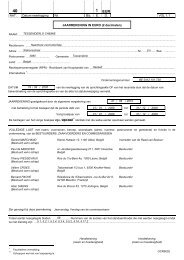
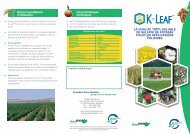
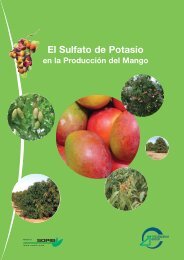
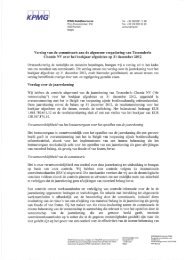

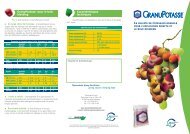
![Investor Seminar Presentation [PDF, 997.72 Kb] - Tessenderlo Group](https://img.yumpu.com/45992427/1/190x143/investor-seminar-presentation-pdf-99772-kb-tessenderlo-group.jpg?quality=85)
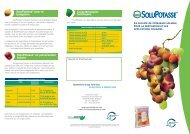
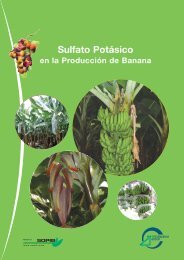
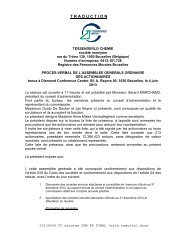
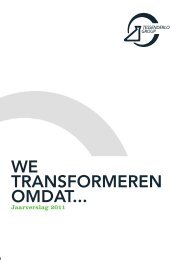
![Talking SOP September 2012 [PDF, 673.84 Kb] - Tessenderlo Group](https://img.yumpu.com/37691694/1/184x260/talking-sop-september-2012-pdf-67384-kb-tessenderlo-group.jpg?quality=85)
![Annual Report 2008 English [PDF, 2.69 MB] - Tessenderlo Group](https://img.yumpu.com/37691533/1/184x260/annual-report-2008-english-pdf-269-mb-tessenderlo-group.jpg?quality=85)